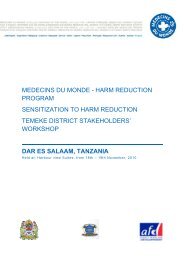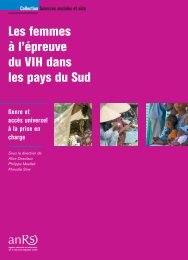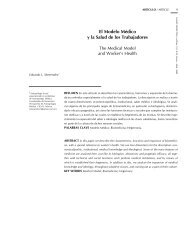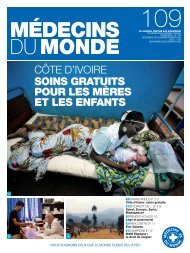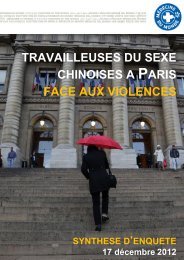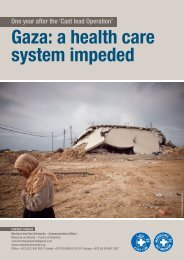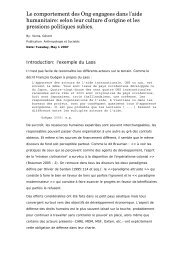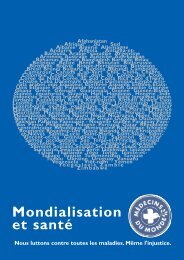Blame & Banishment - Médecins du Monde
Blame & Banishment - Médecins du Monde
Blame & Banishment - Médecins du Monde
Create successful ePaper yourself
Turn your PDF publications into a flip-book with our unique Google optimized e-Paper software.
<strong>Blame</strong> and <strong>Banishment</strong>: The underground HIV epidemic affecting children in Eastern Europe and Central Asia<br />
self-acceptance, lack of information and access to services. Given widespread homophobia,<br />
they fear disclosing their identity and sexual orientation. Mistrust in government services is<br />
high because of judgmental attitudes and lack of confidentiality. As expressed by a young<br />
MSM from Moldova:<br />
“I wish for a service that will truly keep all secret… not look at you strangely… the<br />
”<br />
provider should be engaged in solving the patient’s problem with a kind attitude.<br />
Unmet needs of the marginalized<br />
HIV/AIDS programming for youth in the region has largely focused on prevention e<strong>du</strong>cation<br />
aimed at the general population of young people using information campaigns, school and<br />
life skills-based curricula, and to some extent peer outreach and youth-friendly services.<br />
Even peer-led programmes in the region tend to focus on young people in formal settings,<br />
such as schools and youth clubs. Many of these mainstream interventions, however, fail to<br />
adequately address the specific risk behaviours and environments of especially vulnerable<br />
young people and tend to be insensitive to the many factors that influence their risk taking.<br />
Too often, a ‘moralistic’ stance is assumed that ‘risk taking should not occur’, and evidence<br />
on effective approaches to support and prevention is overlooked.<br />
Much more needs to be done to improve the appropriateness of services for young people and<br />
their access to them. The large majority of interventions for vulnerable or high-risk groups in<br />
the region are oriented towards a<strong>du</strong>lt populations. Civil society organizations working with<br />
at-risk populations are often reluctant to provide services to under-age populations for fear of<br />
legal or other repercussions, such as accusations by the public of promoting risky behaviours<br />
to minors. In some cases a ‘don’t ask, don’t tell’ approach is employed – services are provided<br />
without asking questions – however, the problem remains hidden and underground.<br />
At the same time, young drug users may be reluctant to access a<strong>du</strong>lt services because<br />
of concerns about privacy and confidentiality, or because they feel that peer e<strong>du</strong>cation<br />
messages, designed for older users, are irrelevant to them. Oftentimes, they are right. For<br />
example, very few interventions in the region specifically target recent initiates to injecting<br />
drug use or those who inject only occasionally. A needle and syringe exchange has little<br />
to offer young people who use drugs but do not inject. Methadone treatment may be<br />
inappropriate for non-dependant drug injectors. As a result, rates of drug use and HIV risk<br />
behaviour are increasing in younger populations.<br />
23



